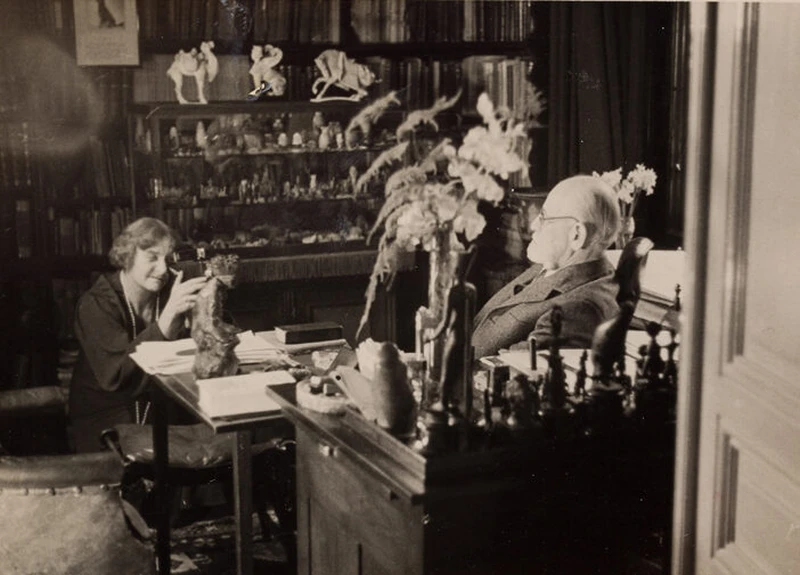Women & Freud: Patients, Pioneers, Artists
30 Oct-5 May 2024


A dazzling new exhibition that highlights the women who helped Freud invent psychoanalysis and their legacy in its practice - as well as in the arts and literature through to our own time.
From the early “hysterics”, who Freud called ‘his teachers’, to later patients, many of whom like Princesse Marie Bonaparte became analysts, to his daughter Anna Freud and her partner Dorothy Burlingham, to artists such as Marie-Louise von Motesiczky, Louise Bourgeois, Paula Rego, and Tracey Emin, the exhibition draws on manuscripts, images, objects, visuals, and film footage to bring to life the many women who featured in Freud’s history, as well as those affected by his considerable body of thinking, rethinking and practice .
Legendary Hogarth Press
2024 also marks the 100th anniversary of the first publication of Sigmund’s Freud’s work by the legendary Hogarth Press, founded and owned by Virginia and Leonard Woolf and a key feature in Bloomsbury life.
The exhibition celebrates the establishment of the Press alongside Bloomsbury Freud. Virginia and Leonard Woolf met Freud in his last year in London. Several of Freud’s British women analysands (and later analysts) worked on the translation that eventually became the Standard Edition of the Complete Works of Sigmund Freud – amongst them the remarkable Joan Riviere and Alix Strachey, who also laboured as a typesetter (and ‘secretaire’) at the Hogarth Press.
Throughout the Museum
Women & Freud: Patients, Pioneers, Artists will stretch through the Museum’s many rooms, beginning with interventions on the ground floor, featuring Freud’s family, his female goddesses and Gradiva – the inspiration of the ‘cure through love’.
Drawing on Appignanesi and Forrester’s book, Freud’s Women, the exhibition sets up a dialectic between Freud’s understanding of women and their understanding of themselves which can work both as resistance to and development of psychoanalytic thinking – and also sometimes as its rejection.
Talking Cure
Did the talking cure give women the power to speak in their own voice? Did Freud raise women’s private, secret thoughts and emotions into a public (and ‘scientific’) discourse so that they could consider their own sexuality openly even if in argument with him? Where does sexual difference elide into gendered expectations or prohibitions?
These are some of the questions the exhibition raises through its women, not least Anna Freud. Her room in the Museum will feature new materials as well as the hand-made objects she loved (and the making of which she found therapeutic), together with a new installation by ceramicist Abigail Schama.
The exhibition will be accompanied by a series of high-profile events bringing some of the best-known contemporary authors to Maresfield Gardens to talk about their work with analysts and thinkers in the very house where Sigmund Freud had tea with Virginia Woolf while discussing his last major work.